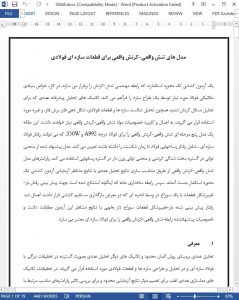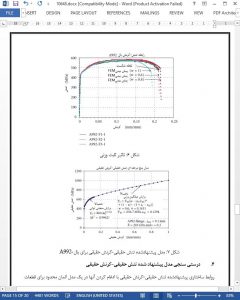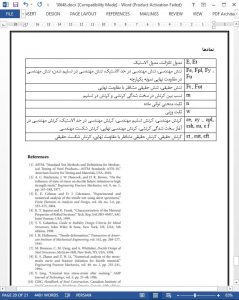A standard uniaxial tensile test, which establishes the engineering stress-strain relationship, in general, provides the basic mechanical properties of steel required by a structural designer. Modern numerical analysis techniques used for analysis of large strain problems such as failure analysis of steel structures and elements metal forming, metal cutting, and so forth, will require implementation and use of true stress-true strain material characterization. This paper establishes a five stage true stress-strain model for A992 and 350W steel grades, which can capture the behavior of structural steel, including the postultimate behavior of steel, until fracture. The proposed model uses a power law in strain hardening range and a weighted power law in the postultimate range. The true stress-true strain model parameters were established through matching of numerical analysis results with the corresponding standard uniaxial tensile test experimental results. The material constitutive relationship so derived was then applied to predict the load-deformation behavior of coupons with a hole in the middle region subjected to direct tension loading. The predicted load-deformation behavior of perforated tension coupons agreed well with the corresponding test results validating the proposed characterization of the true stress-true strain relationship for structural steel.
1. Introduction
The finite-element- (FE-) method-based numerical analysis and other numerical analysis techniques are widely used in research involving structural steel and in the analysis and design of steel structures and elements. In research, numerical modeling techniques are often used to effectively expand the limited experimental results and used to investigate the influence of relevant parameters associated with a problem. Such simulations models for structural steel, however, require the use of realistic material stress-strain relationships, often extending up to fracture. Mechanical behavior of metallic type material, such as that of steel, is generally established by means of uniaxial tension test. Such tension test protocol [1], which was primarily created only for use in comparison of different steels, establishes the engineering stress and the engineering strain. Figure 1 shows a typical engineering stress-strain relationship for steel (solid line), where the stress was calculated as load divided by the original cross-section area of the tension coupon, and the engineering strain was calculated as change in length divided by the original gauge length. Such calculations, which do not recognize the area changes during increasing loads, are used for convenient of measurements of dimensions and will always show an elastic range (Region-I), strain hardening range (Region-IV), and a strain softening range (RegionV).
5. Conclusions
Steel structures construction often necessitates fabrication of holes in the flanges of steel beams [14]. If one has to build finite element models for such studies or other similar studies on steel structures and elements, then such FE models require realistic material stress-strain relationships, which can capture the fracture of steel as well. Traditional uniaxial tension tests provide engineering stress-engineering strain results which are not accurate particularly in the strain hardening range and in the postultimate strength range. This investigation developed true stress-true strain relationships for structural steels in general, and for A992 and 350W steel grades in particular. This paper established five-stage true stress-true strain constitutive models for structural steels, based on numerical simulations calibrated against experimental uniaxial tension test results. The proposed model uses a power law in strain hardening range and a weighted powerlaw in the postultimate range. The true stress-true strain model parameters were established through a combination of experimental and numerical modeling techniques. The stresses and strains at fracture for the standard coupons based on numerical analysis differed by less than 5% when compared to the corresponding results from the experiment. The proposed material constitutive relation was further verified through comparison of finite element analysis loaddeformation behavior with the corresponding experimental results for perforated tension coupons.












سلام من خرید کردم ولی ترجمه فارسی برام نیومده
پاسخسلام وقت بخیر. لطفا جهت بررسی اطلاعات خرید خود را به پشتیبان سایت ایران عرضه از طریق ایتا یا تلگرام ارسال نمایید.
پاسخ